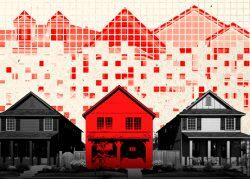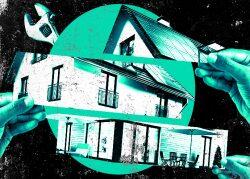The paucity of U.S. homes for sale, which has intensified to historic levels during the pandemic, is unlikely to be resolved anytime soon, experts say.
Housing inventory could take years to recover from its current record lows, experts told U.S. News & World Report, citing supply chain difficulties and lasting repercussions from the 2008 financial crisis, as well as an influx of millennial buyers in the market.
Fewer than 1 million homes were available for sale across the U.S. for much of last year, and inventory reached a low of 753,000 in December, a TRD analysis of Zillow data showed. Active listings were down 22 percent year-over-year as of mid-April, according to the National Association of Realtors.
Supply-chain challenges have plagued the economy, and labor and supply shortages have driven up costs and extended construction timelines, making it difficult for home builders to keep up with demand. While housing starts were up 22.3 percent year-over-year in February, according to the U.S. Census Bureau, completions of those already in progress declined over the same period.
“We need to get that supply chain moving,” said Lisa Knee, EisnerAmper’s chair of real estate services, told U.S. News.
Read more



Construction starts slowed after the 2008 financial crisis, plummeting from 1.3 million in 2007 to 554,000 in 2009. That annual figure didn’t recover above 1 million until 2014, despite consistently hitting 1.5 million starts per year in the 1980s and 1990s.
“There really haven’t been enough homes built since the housing crisis,” Knee added, referring to the 2008 crash.
Millennials are also squeezing inventory as the generation’s embrace of homebuying further increases demand. More than 4 in 10 homebuyers are now millennials, according to a report from NAR cited by the publication.
While the hot market is sidelining many would-be buyers, tight inventory continues to help sellers command top dollar for their homes. Rising interest rates could offset that, but it’s unclear whether that will be enough to stop the rise in median home price, which posted another double-digit annual increase in February.
It will likely take “about four years” before the market begins to normalize, Jeff Taylor, managing director of mortgage technology firm Mphasis Digital Risk, told the publication.
[U.S. News & World Report] — Holden Walter-Warner
